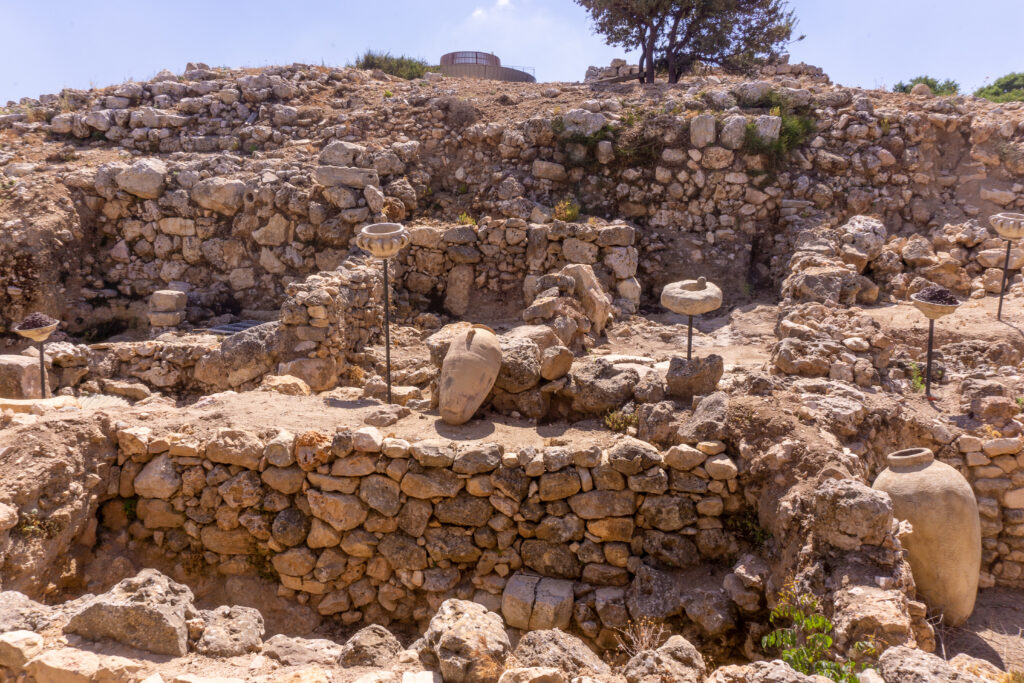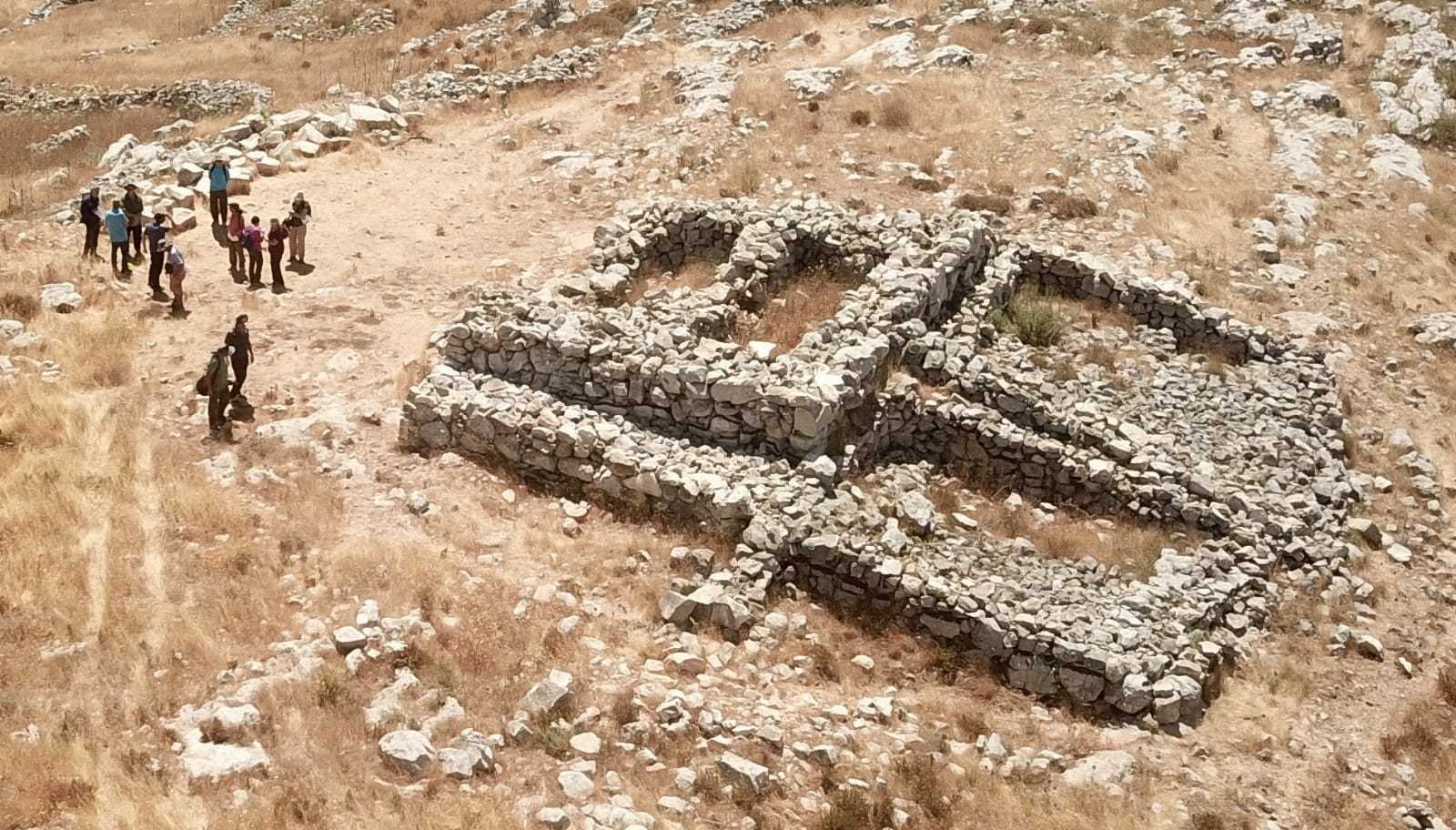Deliberate vandalism and institutional neglect endanger thousands of sites documenting biblical and post-biblical Jewish history
The ancient aqueduct system that once carried water from Hebron through Bethlehem to Jerusalem—an engineering marvel built by King Herod over two millennia ago—survived Roman conquests, Byzantine rule, Crusader invasions, and Ottoman occupation. It could not, however, survive the Palestinian Authority’s 2022 excavation of a massive 1,500-dunam quarry that deliberately cut through the historic waterway, destroying two kilometers of pipeline and 100 meters of tunnels in a single operation.
The destruction of Herod’s aqueduct represents more than isolated vandalism—it exemplifies what archaeological preservation advocates describe as a systematic campaign to erase physical evidence of Jewish presence in the biblical heartland of Judea and Samaria.
The Scope of the Crisis
Judea and Samaria contain approximately 12,000 identified archaeological sites, making the region the world’s densest concentration of Jewish antiquities. This includes Shiloh, where the Tabernacle stood for over 400 years; Hebron, burial place of the biblical patriarchs and matriarchs; and Shechem, where Joshua erected an altar after the conquest of Canaan.
Yet paradoxically, this archaeologically richest region remains the most neglected. Since Israel gained control of the territories in 1967, fewer than 10% of sites have received even partial excavation—approximately 1,000 sites compared to 9,000 excavated elsewhere in Israel.

A comprehensive survey by Shomrim Al Hanetzach (Preserving Forever), an organization supported by the Israel Heritage Preservation Center, documented damage to 80% of significant archaeological sites in Judea and Samaria. The destruction stems from multiple sources: systematic Arab vandalism, antiquities theft, unsupervised construction, and agricultural encroachment.
“The destruction of Jewish archaeology in Judea and Samaria is designed to systematically eliminate all evidence of Jewish history in the region,” explains Adi Shargai from Shomrim Al Hanetzach.
Biblical Sites Under Attack
The crisis extends to some of Judaism’s most ancient and sacred archaeological sites. At Mount Ebal—location of Joshua’s altar and one of the world’s oldest Jewish archaeological sites—Palestinian road construction destroyed sections of a 3,200-year-old defensive wall. Archaeologist Scott Stripling recently discovered at this site what researchers believe to be the oldest Hebrew inscription ever found in the Land of Israel.
Following the wall’s destruction, a nearby Arab municipality began implementing plans for a residential neighborhood directly atop the altar site, complete with access roads—despite the planned development being several kilometers from the existing town boundaries.
Official Palestinian Authority documents revealed construction permits for 32 buildings at the Joshua’s altar location, confirming what preservation advocates describe as intentional targeting of Jewish historical sites.
The ancient city of Sebastia in central Samaria—once capital of the northern Kingdom of Israel—exemplifies the broader pattern. Despite containing remarkable remains including First Temple period columns and a massive Herodian amphitheater, Israeli authorities have provided minimal development resources. In 2022, Palestinian road construction through the site’s center destroyed Herodian-era walls and Second Temple period burial caves.
The Archelais Precedent
The 2017 destruction of Archelais in the Jordan Valley galvanized archaeological preservation efforts. The site, featuring a magnificent palace built by Archelaus (son of Herod) and famous throughout the Roman Empire for its date cultivation, had been systematically excavated from 1986-1999.
Palestinian Authority bulldozers subsequently obliterated the ancient remains to construct the Arab city of Khirbet al-Buyudat directly over the archaeological site.
Palestinians broke into Joseph’s Tomb outside of Nablus and vandalized it. One of the Jews most holiest sites.
— Ari Ingel (@OGAride) April 10, 2022
If this was a Muslim holy site vandalized like this, there would be 1000 rockets launched at Israel already. The world turns a blind eye to this hatred. pic.twitter.com/dHBLXDeDY5
Young archaeologists Zachi Dvira and Hagai Cohen, who witnessed the Archelais destruction, founded Shomrim Al Hanetzach in response. “We had never seen such extensive destruction,” Cohen recalls. “We were very alarmed.”
Their documentation efforts eventually attracted legislative attention, resulting in emergency protective measures for archaeological sites—though advocates argue these remain insufficient.
Protection Gap
The Israel Antiquities Authority has declined responsibility for Judea and Samaria, leaving archaeological oversight to the Civil Administration—a body focused primarily on daily governance rather than heritage preservation.
Knesset Member Amit Halevi (Likud) has authored legislation to establish a dedicated authority for regional antiquities with independent funding. “We must not accept this cultural crime,” Halevi states. “After almost sixty years of terrible neglect, the time has come to take responsibility for the nation’s heritage.”
Ancient Treasures, Modern Threats
The destruction accelerated dramatically following the 1993 Oslo Accords, which created Areas A and B under varying degrees of Palestinian Authority control. Archaeological excavations declined precipitously while vandalism and systematic looting increased.
Israel’s thriving antiquities market incentivizes grave robbing and site looting, with artifacts that survived millennia of foreign occupation now threatened under Jewish sovereignty. Ancient cemeteries suffer particular damage as looters target burial sites for saleable objects.
Recent examples include the Reihan archaeological site in northern Samaria, which housed a Jewish community from the Mishnaic through Byzantine periods. The site featured hewn stone buildings, watchtowers, and an elaborate mausoleum—until Arab crews with bulldozers converted it into a parking lot.
Reihan Forest. North-west Samaria. In the heart of a nature reserve, an illegal junkyard is being run by criminals from nearby Arab towns.
— Regavim (@RegavimEng) September 11, 2020
Regavim’s aerial photos show a dramatic increase in activity over last few years. pic.twitter.com/9zGiqwpd06
The Stakes
“Even though Judea and Samaria are the cradle of the Hebrew nation, and contain archaeological finds of national and international importance, no effective solution to the problem has yet been implemented,” Halevi argues. “After almost sixty years of terrible neglect, the time has come to take responsibility for the nation’s heritage.”
The crisis represents more than academic archaeological concern. These sites provide tangible connections to biblical narratives and post-biblical Jewish history, documenting continuous Jewish presence in the biblical heartland across millennia.
As systematic destruction continues, advocates warn that irreplaceable historical evidence documenting the Jewish people’s deepest roots faces permanent loss—not from natural disaster or wartime necessity, but from deliberate cultural vandalism enabled by institutional neglect.
Despite legislative momentum, preservation advocates emphasize that time remains critically short for sites across Judea and Samaria, where each day brings fresh reports of damage to archaeological treasures that survived ancient empires but may not survive contemporary indifference.
This article draws from reporting by Yechezkel Lang in “מי רוצה לקבור את ההיסטוריה היהודית?” published in Olam Katan, Balak 5785, Edition #1005.





